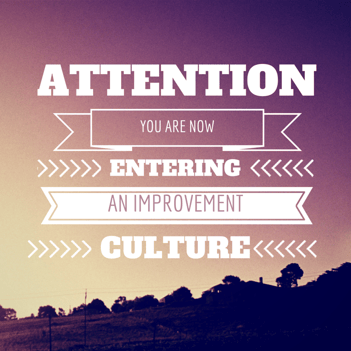 I’ve been fortunate to speak with and learn from some incredible leaders. On my podcast, we focus on leaders who have been successful in Lean or Continuous Improvement. Recently I was asked, “What do you believe are the common elements of the continuous improvement culture that leaders provide?” These leaders all promote rapid action, but that's not all; these leaders also think of their continuous improvement culture differently.
I’ve been fortunate to speak with and learn from some incredible leaders. On my podcast, we focus on leaders who have been successful in Lean or Continuous Improvement. Recently I was asked, “What do you believe are the common elements of the continuous improvement culture that leaders provide?” These leaders all promote rapid action, but that's not all; these leaders also think of their continuous improvement culture differently.
Think of your culture of continuous improvement as a car with a high performance engine that needs three essential elements:
- Leadership: Steering and making sure the car is going in the right direction on the journey
- Problems or Opportunities: The fuel that propels you forward
- Your People: That’s where the real horsepower comes in, when you give them a place to belong.
In order to make progress on your journey, you need all three of elements to get there. If you miss one of these elements, your continuous improvement engine is going to sputter, misfire, and eventually fail. Let’s explore each of these areas to make sure that your “engine” is set for top performance.
Leadership: Do you know where you are going?
Active leadership is not just determining the pace at which your organization is moving, it is choosing the direction and goal that your organization or team is moving toward. If you choose the right goals, your team will help you choose the right direction and path. The inverse of this applies as well; if you choose the wrong goals or focus on things that do not align with the purpose of your organization, you risk your team abandoning your leadership.
Problems: Problems ARE Opportunities, Don’t Hide Them!
There are two types of leaders: those that hide their problems and deny they exist, and those that expose their problems, shine a spotlight on them, and call attention to them. As you are reading this, ask yourself which type of leader you are. Likely you fall somewhere on a spectrum of leadership between these two extremes. By choosing which type of leader you would like to be, you also choose what types of influence you will employ to lead your team.
The first type of leader often leads (or more likely rules) with ceremony or authority. They surround themselves with people on their teams that will not challenge assumptions, make honest observations, or share their concerns. This type of leader harkens thoughts of Hans Christen Andersen’s The Emperor’s New Clothes.
The second type of leader is the one you will typically find in an organization that is highly engaged in continuous improvement. This leader will always be actively searching their organization for occurrences when the expected results deviate from the actual results and they want to understand why. However, it’s not just enough to be knowledgeable about your problems - you also have to take action on them. Knowledge without action is just data. Knowledge with action is power.
Knowledge without action is just data. Knowledge with action is power.
In order to improve you have to be actively solving your problems. By empowering your team to identify opportunities to improve and encouraging them and engaging with them to solve them, you are “fueling” the improvement spirit of your organization.
Your People: Give Them a Place to Belong
Humans are social creatures. We all internally have a need to belong; even people who consider themselves loners belong to a group of other people who consider themselves loners. We all want to be on, or identify with, a winning team. A leader of that winning team fills that role because they typically ask themselves the following questions:
- How do the people I serve identify themselves in relation to my leadership?
- How do I provide the people I serve with a sense of belonging?
Notice I phrased the question with “how do I…” rather than “how can I…” The word “can” speaks to capability, whereas the word “do” refers to an action. Want to inspire your team to take action and make improvements? If so, take these actions NOW:
- Provide your teams with a purpose: How do we create value for others?
- Provide your teams with a high level of trust: It’s ok to make mistakes, that’s how we learn. It is not ok to hide your problems.
- Provide your teams with a standard: What does success look like?
The people we serve will reflect back the investment of time, thoughts, and actions that we put into them. I love Sir Richard Branson’s view related to this when he said “Train your people well enough they can leave, treat them well enough so they don’t want to.”
Examine the elements of your leadership and how it affects the culture in your team or your organization. If you see a gap, take action now to narrow that gap. Leaders don’t improve for themselves; they improve for the people they serve.
The author of this post, Chris Burnham, is the host of The Lean Leadership Podcast. He is passionate about equipping leaders with the mindset and knowledge they need to be successful in their lean and continuous improvement journey. You can find his podcast at www.leanleadershippodcast.com or connect with him on twitter@realburnham.



Add a Comment